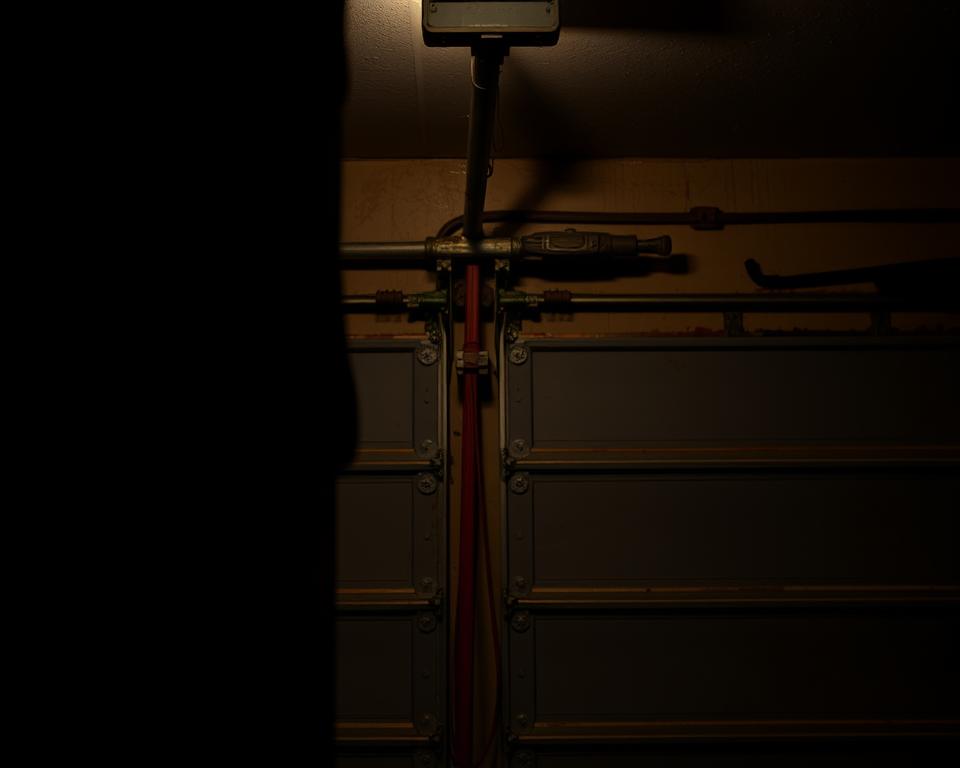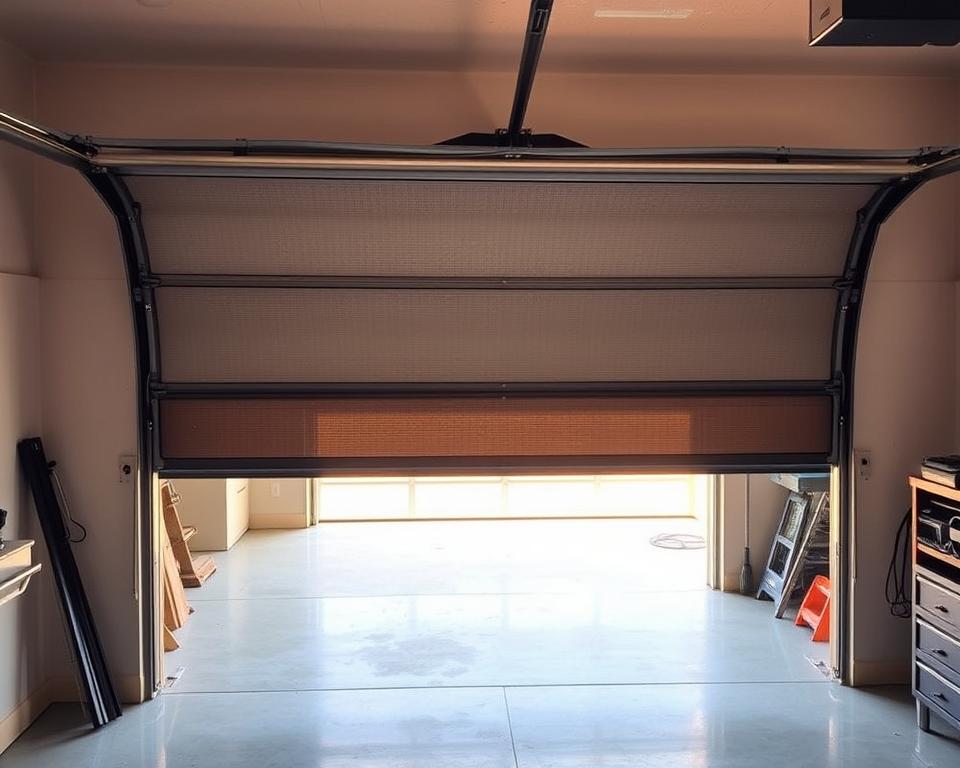Restoration of Garage Door Rollers in Corona Del Mar – Specialist Solutions
Ever contemplated what keeps your garage door operating seamlessly and securely? The answer is found in the frequently neglected garage door rollers. At Coastline Garage Doors, we understand the significance of these elements for your garage door’s effectiveness and security. Our specialist services in garage door roller repair in Corona Del Mar ensure your garage door operates without interruption. It remains a essential part of your home’s security.
With our experienced garage door opener installation cost, we address not only the pressing needs but also prevent future issues. These issues can compromise your peace of mind.
Do not risk the security of your premises—discover why timely garage door service in Corona Del Mar is crucial for both convenience and security.
Crucial Summaries
- Garage Door Roller Repair are critical for smooth operation.
- Expert repair services can boost the lifespan of your garage door.
- Prompt maintenance prevents potential issues and expensive repairs.
- Ignoring roller deterioration can result in hazards.
- Expert solutions guarantee your garage door’s consistency.
Grasping the Significance of Garage Door Rollers
Garage door rollers are essential to your garage door’s smooth operation. They enable the door to move along its tracks effortlessly, ensuring it operates without a hitch. Routine maintenance, such as inspecting these rollers, is vital for your door’s effectiveness and durability.
The Role of Rollers in Garage Door Functionality
Rollers are integral for a garage door’s seamless functioning. They connect the door to the tracks and avoid any blockages. This arrangement not only ensures opening and closing efficient but also reduces wear on additional parts. Opting for roller repair in Corona Del Mar ensures your door operates at its best.
Consequences of Deteriorated Rollers on Garage Door Operation
Deteriorated rollers can result in a variety of issues, from sound to total malfunction. They may skew the door or lead to it getting stuck. Prompt repair is essential to avoid more extensive damage. Consistent maintenance in Corona Del Mar helps prevent these issues, saving you from costly repairs.
Frequent Problems with Garage Door Rollers
Garage door rollers are crucial to smooth operation. Problems can occur as they wear out or malfunction. Identifying these issues early can save both time and costs. Be alert to symptoms to determine whether you require a damaged door roller repair or an upper door roller fix.
Indicators of Excessive Noise
Sound during operation frequently denotes roller issues. Grinding or creaking sounds usually mean a lack of lubrication or damaged rollers. Addressing these sounds quickly can stop more extensive garage door hardware fix Corona Del Mar needs.

Issues with Operating
Struggles with your garage door signifies misadjusted or malfunctioning rollers. If the door lags or hesitates, it’s time to investigate. This could suggest a broken door roller repair is needed to prevent further damage.
Evident Roller Damage
Consistently check your rollers for wear signs. Cracks, nicks, or accumulated grime mean it’s due for an overhead door roller fix. Ignoring these signs can cause more intricate problems and expensive repairs.
Garage Door Roller Repair in Corona Del Mar
At Coastline Garage Doors, we’re authorities in garage door roller repair in Corona Del Mar. Our skilled technicians address a range of roller issues, ensuring your garage door operates seamlessly. With state-of-the-art diagnostic tools, they assess each component, offering personalized solutions for each problem.
A Look at Our Professional Repair Services
Our services in Corona Del Mar cover both minor and extensive roller problems. Our technicians are trained to spot early indicators. They operate quickly and efficiently, using premium materials to guarantee durable repairs.
Importance of Prompt Repairs
Ignoring repairs can cause more serious problems, resulting in increased costs and safety hazards. Prompt repairs in Corona Del Mar maintain your system in prime condition and extend its longevity. Regular maintenance and prompt repairs prevent the need for expensive roller replacements, ensuring your garage door working perfectly for years.
Signs You Need Roller Replacement
Recognizing when to replace your garage door rollers is crucial to keeping your door operating optimally. A roller replacement service is needed when rollers are badly damaged, repeatedly failing, or if fixes haven’t worked. Identifying these indicators can help property owners in deciding on the appropriate solution for their roller components in Corona Del Mar.
When to Opt for a Replacement Instead of Repair
If your garage door rollers continue to malfunction, it’s time to think about replacing them. Temporary fixes might merely provide short-term fixes if the problem is inherent in the rollers themselves. Be alert to these critical signs:
- Constant sticking during operation
- Visible deterioration such as fractures or chips
- Failure to stay aligned
- Severe degradation on other door components due to roller breakdown
Indicators of Roller Failure
Homeowners should be on the lookout for distinct signs that rollers are on the verge of failing. If you see any of these, it’s best to talk to experts:
- Odd sounds during operation
- Inefficient sliding of the door
- Visible wear on door roller parts in Corona Del Mar
- Incomplete opening or closing
Why Professional Service is Beneficial
Opting for professional garage door roller repair in Corona Del Mar offers homeowners significant benefits. Seasoned technicians verify that any garage door issues are detected and resolved efficiently. They can identify problems early, averting them from becoming expensive repairs.
Skilled Diagnostics with Tailored Solutions
Coastline Garage Doors’ technicians, with a wealth of experience, provide professional diagnostics and custom solutions. Their skill enables them to detect hidden problems, ensuring your garage door works well. When you choose garage door roller repair in Corona Del Mar, you can trust that your door will get the finest care.
Employment of Top-Quality Parts
Employing top-quality garage door parts, like high-quality nylon rollers, boosts your garage door’s lifespan and efficiency. These materials ensure durability and improve how your door works. Emphasizing quality repairs means your garage door will be more efficient and reliable, reducing the need for repairs in the long run.
Understanding Our Roller Replacement Service
Understanding the roller replacement process is essential to keeping your garage door in top shape. At Coastline Garage Doors, our experienced technicians take a thorough approach. This guarantees effective solutions for any roller issues you might encounter. The journey begins with a thorough inspection to check your rollers and the garage door’s overall condition.
How We Replace Rollers: A Step-by-Step Guide
The roller replacement process involves several essential steps:
- Preliminary Check: We evaluate the rollers for deterioration and operational issues.
- Removal of Old Rollers: We remove damaged or deteriorated rollers from the door tracks securely.
- Fitting of Replacement Rollers: We install top-tier rollers that suit your garage door’s requirements.
- Realignment: If needed, we reposition the door for smooth operation after the installation.
Choosing the Right Roller for Your Door
Choosing the right roller is crucial for your garage door’s performance and durability. Coastline Garage Doors evaluates several factors:
- Dimensions and mass of the garage door
- Type of garage door (manual or automatic)
- Local weather conditions in Corona Del Mar
Our team is dedicated to providing excellent garage door service in Corona Del Mar. We guarantee your roller replacement fits your exact garage door model perfectly.
Garage Door Maintenance Tips
Maintaining your garage door is key to its longevity and smooth operation. Routine maintenance in Corona Del Mar averts surprise breakdowns. Homeowners can carry out simple checks and basic tasks to prolong the life of rollers and doors.
Routine Upkeep for Extended Durability
Regular upkeep is essential for garage door integrity of your system. Property owners should prioritize these key maintenance tasks:
- Frequently lubricate the rollers and tracks to minimize resistance.
- Inspect for any indications of deterioration on rollers, ensuring they remain in optimal condition.
- Keep the tracks clean from dirt to promote smooth function.
- Tighten any unfastened screws or bolts to maintain structural stability.
Do-It-Yourself Garage Door Advice
Simple DIY garage door maintenance can significantly improve its performance. Here are a few quick tips:
- Use a silicone-based lubricant on rollers and hinges to stop rust and ensure smooth movement.
- Check the alignment of the tracks and make corrections to avoid jamming.
- Test the balance of the door by detaching it from the opener; it should remain in place when lifted halfway.
Why Choose Coastline Garage Doors?
Coastline Garage Doors excels in garage door roller repair and service, due to its skill and dedication to quality. Our technicians receive extensive training to address a variety of garage door issues in Corona Del Mar. We deliver top-notch service, demonstrating our commitment to customer satisfaction in every project.
Skilled and Experienced Technicians
Our team features seasoned technicians, each with extensive expertise in garage door repair and service. Their proven track record ensures they deliver precise diagnostics and swift repairs. Whether it’s component or additional problems, our experts confirm your garage door operates impeccably, boosting its durability and dependability.
Dedication to Client Happiness
Customer satisfaction is our guiding principle at Coastline Garage Doors. We prioritize clear communication and prompt service from the initial contact to the completion of the repair. In Corona Del Mar, our customers can count on us for quick responses, professional guidance, and tailored solutions. Trust us to deliver a seamless and rewarding garage door service journey.
Prompt and Efficient Service Guarantee
Garage door failures can be exasperating and interfere with your schedule. Coastline Garage Doors understands the urgency of these situations. We offer exceptional prompt and efficient services, guaranteeing same-day service in Corona Del Mar for all homeowners. Our team specializes in emergency garage door repairs, protecting your residence rapidly and resuming functionality.
Importance of Same-Day Service for Emergencies
Garage door malfunctions can pose safety concerns and impede entry. A immediate response is essential. Our same-day service in Corona Del Mar resolves problems promptly, averting additional damage. Our experienced technicians are ready to manage emergencies swiftly, providing your reassurance.
Access to Emergency Repairs
Coastline Garage Doors provides emergency garage door repairs whenever you need them. Our expert professionals are prepared to address any issue, from broken spring to skewed track. With our emergency service, you won’t have to delay to restore your garage door’s functionality. Rely on our skills to fix any unexpected challenges with efficiency and accuracy.
Customer Testimonials and Success Stories
Customer feedback is essential for improving our services. At Coastline Garage Doors, we’re proud to present testimonials that illustrate real client stories. These stories reflect our commitment and the effectiveness of our garage door roller repair in Corona Del Mar. By considering our customers, we aim to maintain high standards and constantly enhance.
Real Experiences from Satisfied Customers
Our clients frequently recount their favorable experiences with us. These testimonies highlight how our team has resolved various problems, restoring functionality and peace of mind. They value our rapid and expert service, which enhances their trust in selecting Coastline Garage Doors.
Our Performance Statistics
We monitor completion times and satisfaction ratings to measure our effectiveness in Corona Del Mar. Metrics include:
| Metric | Rating |
|---|---|
| Average Completion Time | 2 hours |
| Customer Satisfaction Rating | 4.9/5.0 |
| Recurring Service Demands | 85% |
These numbers highlight our dedication to superior service in garage door roller repair services. Satisfied clients are a testament of our efforts and commitment, motivating us to provide outstanding service every time.
To Summarize
In conclusion, timely garage door roller repair in Corona Del Mar is critical for your home’s safety, protection, and optimal performance. Ignoring roller issues can develop into major problems, affecting your garage door’s function. It’s essential to address any indications of deterioration or malfunction promptly to prevent costly repairs down the road.
Property owners in Corona Del Mar can rely on Coastline Garage Doors for reliable and expert services. Our skilled technicians are dedicated to guaranteeing your garage door works seamlessly. Customer satisfaction is our top concern, reflecting our commitment to excellence repairs.
Don’t let minor problems turn into major issues. Guarantee your garage door’s safety and functionality by contacting us today for a evaluation. Trust us to provide top-notch garage door roller repair in Corona Del Mar that you can depend on.









